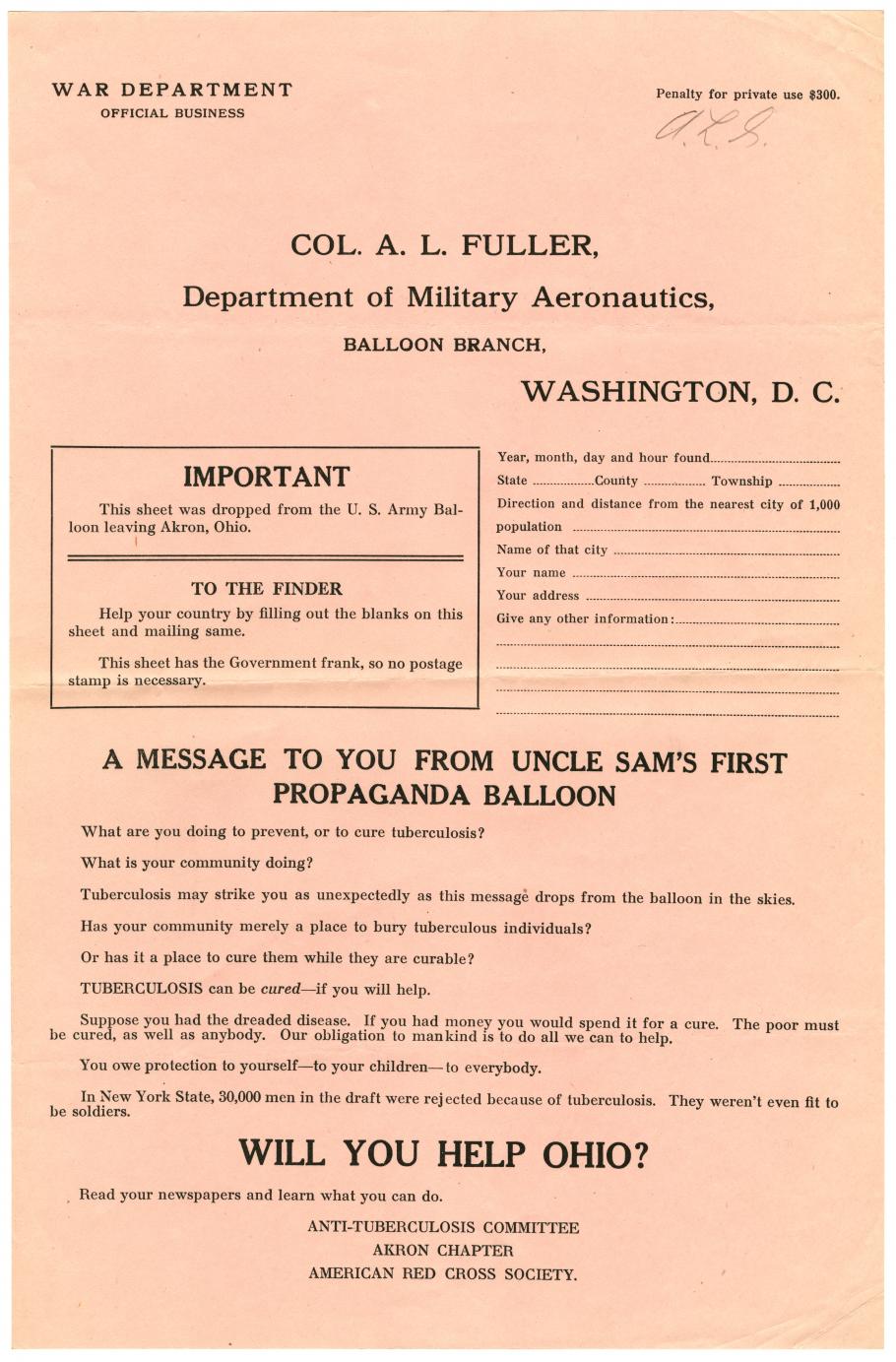Our Archives houses the Technical Reference Files, an important collection of aeronautical and astronautical topics comprised of 1,920 cubic feet of documents, photographs, and ephemera. This important resource is housed in vertical files and is an organic, growing collection to which material is added constantly. Recently, we came across a remarkable document in the Tech Files of the long fight against tuberculosis—shared with you today in recognition of World Tuberculosis Day. The flyer below is an example of propaganda, in this case dropped from a balloon. We are perhaps most familiar with propaganda distributed to influence the opinion and behavior of soldiers and civilians in and near actual armed conflicts. It can provide factual news of war unavailable to civilian populations, convey terms of surrender to soldiers, or seek to affect the morale of citizens and troops. Because penalties could be severe for those found in possession of enemy propaganda during wartime, propaganda is often rapidly destroyed and therefore may not survive to be preserved in the collections of archives.
During the period of the first World War, Colonel A. L. Fuller served as chief of the American Balloon Service. The Army at that time was suffering the loss of personnel, not just to enemy action, but to illness as well. Tuberculosis was widespread and devastating, and no effective treatment had yet been developed. Rates of infection with primary tuberculosis were high in soldiers entering service and military living conditions contributed to a high incidence of secondary tuberculosis. Soldiers who developed debilitating cases of the disease were often sent home, confined in embarkation hospitals until they could be transported overseas in large groups. To engender awareness on the home front and perhaps contribute to a healthier population of available military personnel, Colonel Fuller employed propaganda flyers, such as this one, dropped from a balloon launched from Akron, Ohio on behalf of the Anti-Tuberculosis Committee of the American Red Cross Society. It advises that, “Tuberculosis may strike you as unexpectedly as this message drops from the balloon in the skies.” It asks the finder to help in the fight against the disease and to provide feedback on the effective distribution of air-dropped propaganda by mailing back information on where it fell. Propaganda can serve many purposes and in this case, was used in support of a fight against an insidious foe that continues today.

